The week at a glance
- Dusky Thrush in Kent
- Male Indigo Bunting photographed on Anglesey
- Brief Collared Flycatcher in East Yorkshire
- Apparent Pacific Diver off Shetland
- Lesser Grey Shrike tops the bill in an excellent week for Holy Island
- Good numbers of scarce migrants — particularly Red-backed Shrikes
- Four-figure count of Long-tailed Skuas from the Outer Hebrides
As one would expect in mid-May, an easterly element in the week's wind direction resulted in plenty of tasty arrivals, primarily in eastern areas. And, among the multitudes of scarce arrivals (primarily Red-backed Shrikes and Red-spotted Bluethroats) came one or two rarities of the highest order. For the third week running, Britain was graced by a new Collared Flycatcher — a more traditional one-evening male at Sammy's Point (E Yorks) on 18th — but it was a Far Eastern thrush that grabbed the headlines.
First seen briefly on Wednesday 15th, a rather Redwing-like Turdus thrush was again noted by Margate birder Steve Tomlinson on 16th, before it was finally seen well and photographed on 17th. Steve sent the photos through to BirdGuides for an opinion on identification later that evening, and it soon became clear that the bird was in fact a female Dusky Thrush. After some discussion, news was released last thing on the Friday. Fortunately, the bird was still present and showing well the following morning and continued to do so throughout the day. As it was the first of its kind to be accessible in Britain for over 53 years, just about anyone list-inclined who could make it to Margate was there at some point during the Saturday, with crowd estimates well into four figures. Frustratingly for those who could not change plans at short notice, the bird had moved on by Sunday morning — perhaps not surprising given a period of finer weather in Kent the previous evening. Given the realistic problem of regular hybridization in the Far East between members of the Dusky/Naumann's and 'Dark-throated' Thrush complexes, and apparent warmth in the underpart colour of the Kent individual, there was plenty of initial speculation as to the parenthood of the Margate thrush. However, with the observed plumage cited as within range of pure female Dusky, fears appear to have been allayed. Still, one would expect many will still move for the next mainland bird — particularly if it looks as good as the now infamous Manchester bird of December 2010!
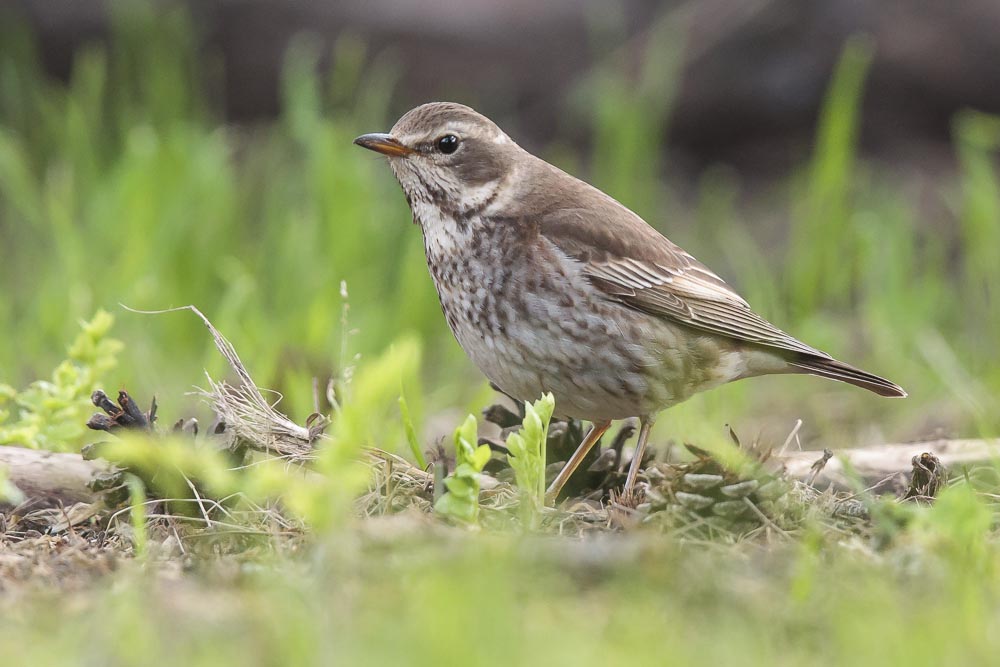
Dusky Thrush, Margate, Kent (Photo: Wayne Geater)
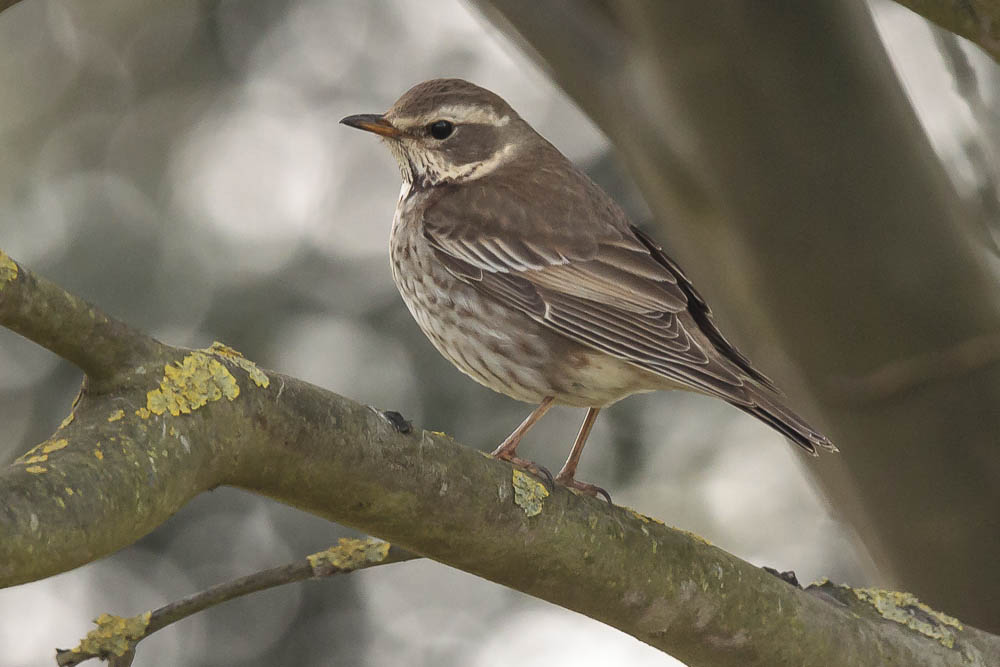
Dusky Thrush, Margate, Kent (Photo: Wayne Geater)
Perhaps undeservedly missing out on widespread attention — largely due to the aforementioned thrush but probably also because of the brevity of its stay — was an apparent breeding-plumaged Pacific Diver off Grutness (Shetland) during the evening of 16th — more details on the Birding Frontiers blog. Shetland's Collared Flycatcher was also last seen on Whalsay on 16th, while White-billed Diver records this week concerned a breeding-plumaged bird off Inishbofin (Galway) from 19th and another north past Aird an Rùnair (North Uist) on 20th. Late on Wednesday, news (and a photograph!) emerged portraying a stunning male Indigo Bunting at a garden feeder at Llansadwrn (Anglesey), taken during the evening of Monday 20th. Though this species rather inevitably attracts controversy (largely due to the fact that it's a pretty blue bird!), there is no reason why this wouldn't be a genuine vagrant — one only has to look at the regularity of the species on the Azores to realise that it is well established as a transatlantic wanderer, and thus the possibility of a breeding-plumaged male re-orientating north in spring is far from outlandish.

Indigo Bunting, Llansadwrn, Anglesey (Photo: Terry & Sonjia Booth)
And, at least from Yorkshire northwards, it proved a rather fine week for scarce and rare drift migrants. Perhaps pick of the bunch was a remarkably showy Thrush Nightingale — bringing back memories of the famously confiding Landguard bird of 1995 — on the putting green at Hartlepool Headland (Cleveland) on 19th–21st. Running it a close second was a smart male Lesser Grey Shrike on Holy Island (Northumberland) on 19th–20th, headlining a real purple patch for the island that also involved a male Rustic Bunting on 19th, a male Barred Warbler at The Snook on 20th–21st, Icterine Warbler, Bluethroat and an incredible ten (possibly twelve) Red-backed Shrikes!
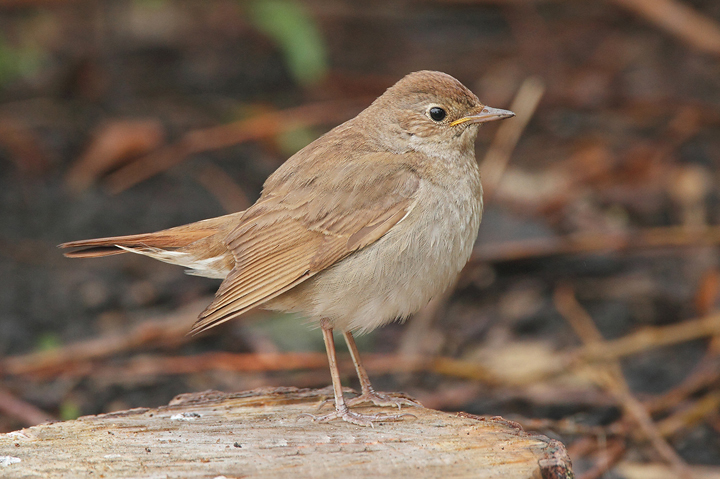
Thrush Nightingale, Hartlepool Headland, Cleveland (Photo: John Dickenson)

Lesser Grey Shrike, Holy Island, Northumberland (Photo: Kris Gibb)
Northumberland also bagged a singing Great Reed Warbler at East Chevington (Northumberland) from 19th (though apparently present for around two weeks before this) and one of the week's handful of Ortolans (others were at Spurn, and on Shetland and Orkney). Further highlights included a Paddyfield Warbler on North Ronaldsay (Orkney) from 20th, a Rustic Bunting on Fair Isle and a dozen or so Common Rosefinches (including one on Rhum). Of the seven reported, the only Red-breasted Flycatcher south of the Humber was a female on Blakeney Point (Norfolk) on 16th. A Melodious Warbler on Fair Isle on 16th was a significant record so far north, while another excellent local record concerned a brief female Citrine Wagtail at Aird an Rùnair (North Uist) on 22nd.

Ortolan Bunting, Newbiggin-by-the-Sea, Northumberland (Photo: Alan Tilmouth)

Common Rosefinch, Rhum, Highland (Photo: Sean Morris)

Red-breasted Flycatcher, South Gare, Cleveland (Photo: Martyn Sidwell)
More conventional drift migrants ('standard scarce' as they are often unattractively referred to) included excellent numbers of Red-backed Shrikes — 112 reports on Bird News Extra during the week related to around 105 birds between Dorset and Shetland and, as well as double figures on Holy Island, multiple counts included five at Whitburn (Durham) a couple of trios from the Northern Isles and several twos. It also proved a productive week for Red-spotted Bluethroat, a comparatively scarce species compared to its pre-Millennium heyday, with as many as 15 reported: showy birds at Blakeney Point (Norfolk), Filey (N Yorks) and Barns Ness (Lothian) all proved popular, while there were one or two multiple counts from the Northern Isles.

Red-backed Shrike, Riverside Nature Park, Angus & Dundee (Photo: Barry Farquharson)

Red-backed Shrike, Holme Dunes NWT, Norfolk (Photo: Roger Ridley)
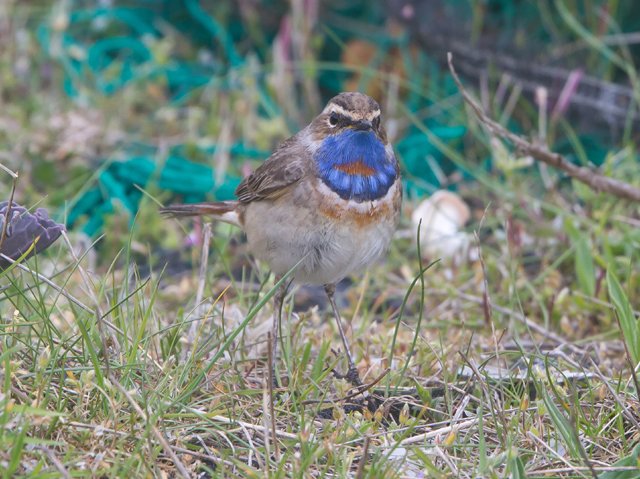
Red-spotted Bluethroat, Dungeness NNR, Kent (Photo: Martin Casemore)

Red-spotted Bluethroat, Barns Ness, Lothian (Photo: Liam Reid)
It is still slightly early for Marsh Warblers to arrive in number, so it isn't surprising that just a handful were reported — birds were trapped and ringed at Spurn (E Yorks) on 16th and 19th, while Fair Isle also scooped two on 18th; others were in Lincolnshire and on Orkney. It was a similar story for Icterine Warblers, whose numbers also failed to reach double figures. The showy Wryneck remained at South Gare (Cleveland) to 19th, with others at Kinneff (Aberdeenshire) on 18th, Crail (Fife) on 19th–20th and Sumburgh (Shetland) on 20th. A Richard's Pipit was briefly on Bolt Head (Devon) on 16th.
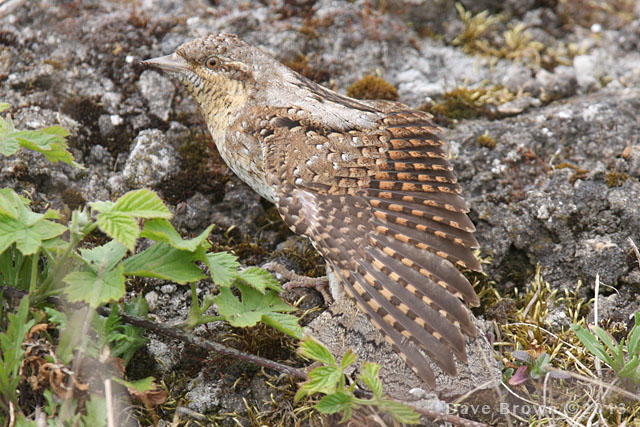
Wryneck, South Gare, Cleveland (Photo: David Brown)
An Iberian Chiffchaff was singing in St. Buryan (Cornwall) on 16th only; also from the south came an Alpine Swift to Ruan Lanihorne on 20th, with a Red-rumped Swallow at Stodmarsh (Kent) the same day. Short-toed Larks reached as far north as Foula (Shetland) on 16th–18th and Balranald (North Uist) on 19th–20th, while Woodchats were fresh in at Lowestoft (Suffolk) and on Tiree (Argyll) from 19th, and at Kenfig (Glamorgan) and Southbourne (Dorset) on 22nd. Elusive Subalpine Warblers remained at Rampside (Cumbria) sporadically to 18th and at Cruden Bay (Aberdeenshire) to 16th, with a new female on Skokholm (Pembrokeshire) that day. Serins were typically brief in Dorset and Kent (2), while Gosport (Hants) boasted the week's only Hoopoe on 17th. Bee-eater records came from Lancashire, Norfolk, Hampshire, West Sussex, Scilly and the Isle of Wight, with an inland record from the Cotswold Water Park on 17th.
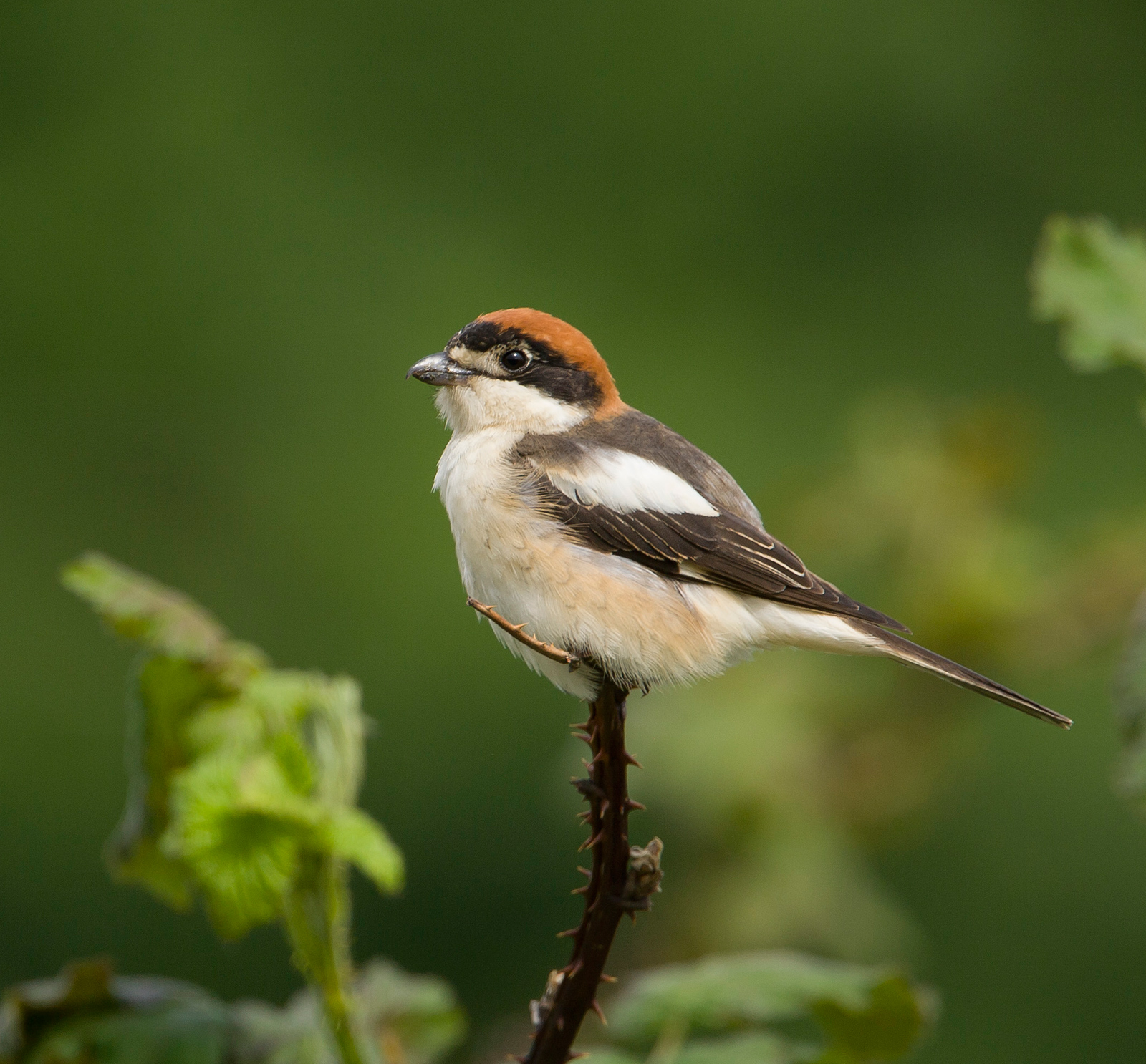
Woodchat Shrike, Lowestoft, Suffolk (Photo: Kevin Du Rose)
A smattering of Black Kite records included the Northumberland bird still at West Hartford early on 16th, one over Abbotsbury then Bridport (Dorset) during the morning of 17th, and what was perhaps the same bird accounting for four Hampshire sightings from 17th–19th. Brief Red-footed Falcons included a female over Assington (Suffolk) and a male over Holt (Norfolk), both on 21st, with the fine adult male lingering at Lakenheath (Suffolk) all week. Up on North Uist, the male Snowy Owl remained at Solas, while a feather belonging to this species was picked up on the Inishkea Islands (Mayo) on 21st — just a small part of a fantastic haul there this week that included a first-summer drake King Eider, adult American Golden Plover, Buff-breasted Sandpiper and up to four Red-necked Phalaropes!
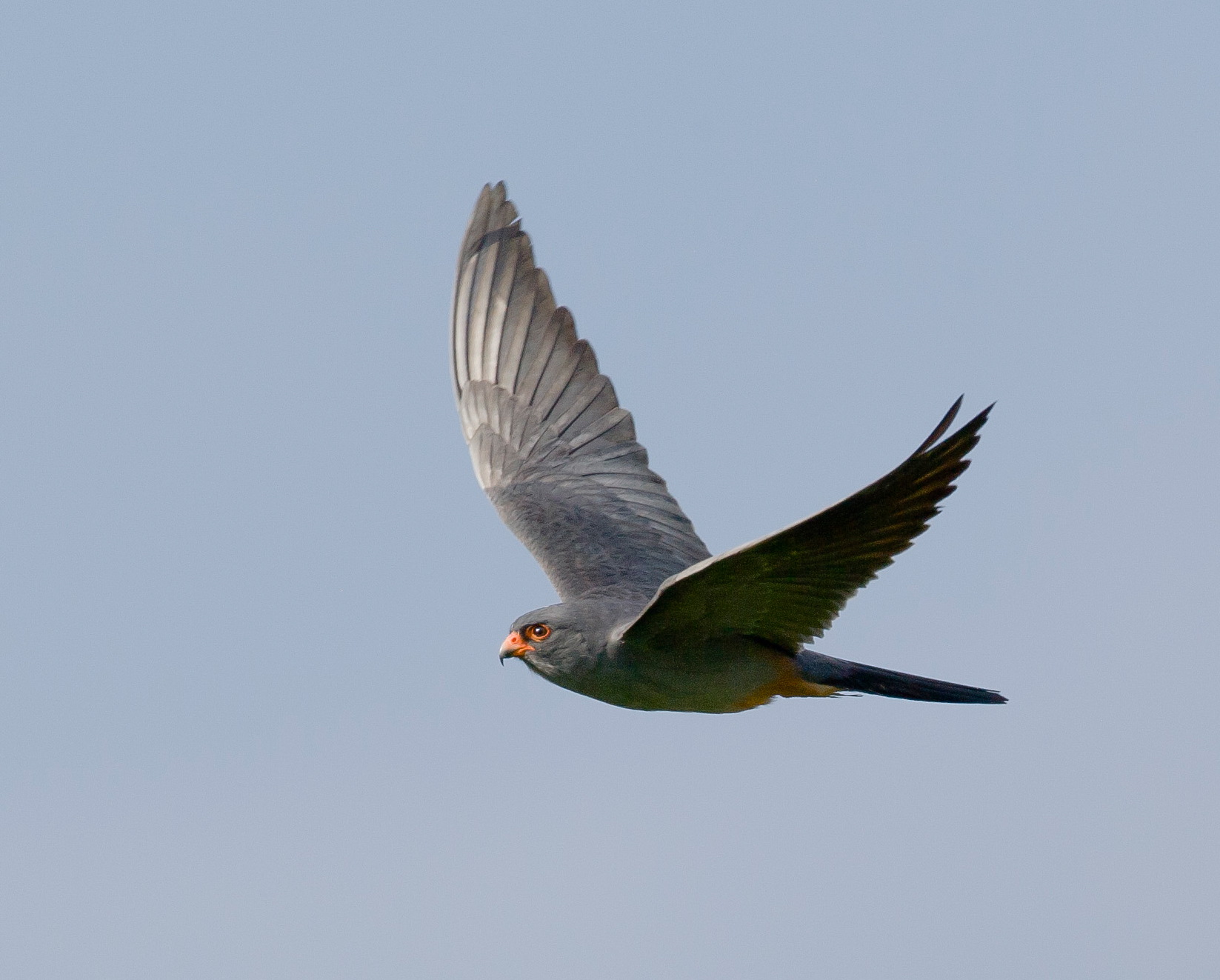
Red-footed Falcon, Lakenheath (Hockwold) Fen, Suffolk (Photo: Kevin Du Rose)

Snowy Owl, Solas, N.Uist, Outer Hebrides (Photo: Joe Graham)
Right on cue for an east wind in mid-May, the year's first Broad-billed Sandpiper was an all-too-brief visitor to Patrington Haven (E Yorks) on 18th, while a Buff-breasted Sandpiper was on Islay (Argyll) on 22nd. The Black-winged Stilt remained at Wicken Fen (Cambs) to 18th. A female Red-necked Phalarope at Coombe Hill Meadows (Glos) from 16th is presumably last year's long-stayer returning. Five Pectoral Sandpipers included new birds at the newly renamed St. Aidan's RSPB (formerly Swillington Ings) in West Yorkshire on 16th, on the Ouse Washes (Cambs) and at Shannon Airport Lagoon (Clare) on 17th and at Cley Marshes (Norfolk) on 21st, in addition to the lingering bird in Cleveland. Around 20 Temminck's Stints were seen and included inland birds in Surrey, Buckinghamshire, Cambridgeshire and Staffordshire.

Black-winged Stilt, Wicken Fen NT, Cambridgeshire (Photo: Mark Leitch)
County Wexford's Forster's Tern was again seen at Tacumshin on 21st, while the first White-winged Black Tern of 2013 was a second-summer at Ferry Meadows (Cambs) during the evening of 20th. An adult Ring-billed Gull was at Maharees (Kerry) on 21st, and the first-summer remained on Shetland. Kent's first-summer Bonaparte's Gull reappeared at Oare Marshes on 22nd, while an immature was at Stithians Reservoir (Cornwall) on 16th and the adult was again in the same county at Siblyback Reservoir the same day. Before 22nd, skua passage never quite hit the heady heights of last week, although an impressive 209 Long-tailed and 110 Pomarine Skuas passed Aird an Rùnair (Outer Hebrides) on 20th and smaller flocks of up to 50 or more Long-tails were reported from west-facing Scottish coasts from Ayrshire north to Shetland. However, records were obliterated on Wednesday as an astonishing 1,125 Long-tailed Skuas passed Aird an Rùnair in two-and-a-half hours in the late afternoon — with birds passing throughout the day, one can only imagine what the true total was! No doubt almost all British birders who saw the report went a shade of green.

Long-tailed Skua, Loch Assapol, Mull, Argyll (Photo: Bryan Rains)
The species has been scarce this year, so an immature Night Heron seen flying over Cley (Norfolk) at dusk on 20th was notable, while Purple Herons included the Northumberland individual at Arcot Pond on 16th and further birds at Marazion (Cornwall) from 19th and again at Kenfig (Glamorgan) on 22nd. A new Cattle Egret graced Dungeness (Kent) on 20th–21st in addition to the usual bird still bumbling about the North Kent Marshes throughout. A Black Stork was seen over Acres Down (Hants) on 18th and then over Oxenbourne Down the following day. White Stork records from Cheshire, Greater Manchester and Cleveland presumably all related to wandering escapes while, entirely unsurprisingly, the Glossy Ibis remained in Pembrokeshire.
A Black Brant was still among lingering Dark-bellied Brents at Warham Greens (Norfolk) on 17th, while a Small Canada Goose was still on North Uist. Four drake Green-winged Teal were all in Scotland — new birds were on South Uist and at Guardbridge (Fife), while one was again at Loch of Kinnordy (Angus & Dundee); another at Loch of Hillwell (Shetland) was joined by a drake American Wigeon from 19th, and the Cork bird was still at Cuskinny Marsh to 18th. A Blue-winged Teal was in Angus near Monifieth on 17th, while Forfar Loch scored a female Ring-necked Duck from 18th (drake Ring-necks were still in Somerset and East Yorkshire). The drake Lesser Scaup reappeared at Anglers Country Park (W Yorks) on 21st, with others still at Saltholme (Cleveland) on 16th and at St. John's Loch (Highland) all week. Finally, the drake King Eider continued in Aberdeenshire and Lothian's Surf Scoter was still off Musselburgh on 22nd.
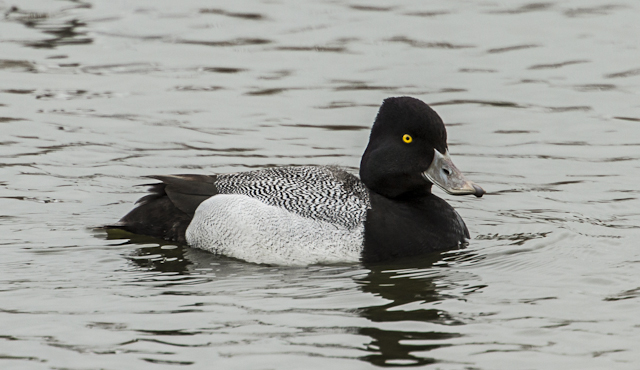
Lesser Scaup, St. John's Loch, Highland (Photo: Karen Munro)
Photo of the Week

Dusky Thrush, Margate, Kent (Photo: Mick Southcott)
Last week, our Photo of the Week featured one of Europe's most colourful and exotic species photographed on a sun-drenched Greek island. This week's chosen image could hardly be more different: a female Dusky Thrush taken in an overcast cemetery in Margate. In the UK, though, the Dusky Thrush is a mega rarity and so we had no shortage of photos of this short-staying gem. Despite the challenging subject and setting, bird photographer Mick Southcott used his experience to capture the bird sitting pretty on a lichen-covered gravestone against a diffuse backdrop. Mick's well-proportioned composition with vertical framing and complimentary colour palette would have made for a great image of the commonest of birds, but to create such a portrait of a mega rarity is a real achievement.
Other Notable Photos

Red-footed Falcon, Hungary (Photo: John Fielding)

Wryneck, South Gare, Cleveland (Photo: Mark Bowen)

Redstart, Gilfach Farm NR, Powys (Photo: Craig Richardson)

Penduline Tit, Poland (Photo: Artur Stankiewicz)

Blue Rock Thrush, Greece (Photo: Jamie MacArthur)

Great Crested Grebe, Bewl Water, East Sussex (Photo: Will Rawles)

Lammergeier, Spain (Photo: Natalino Fenech)
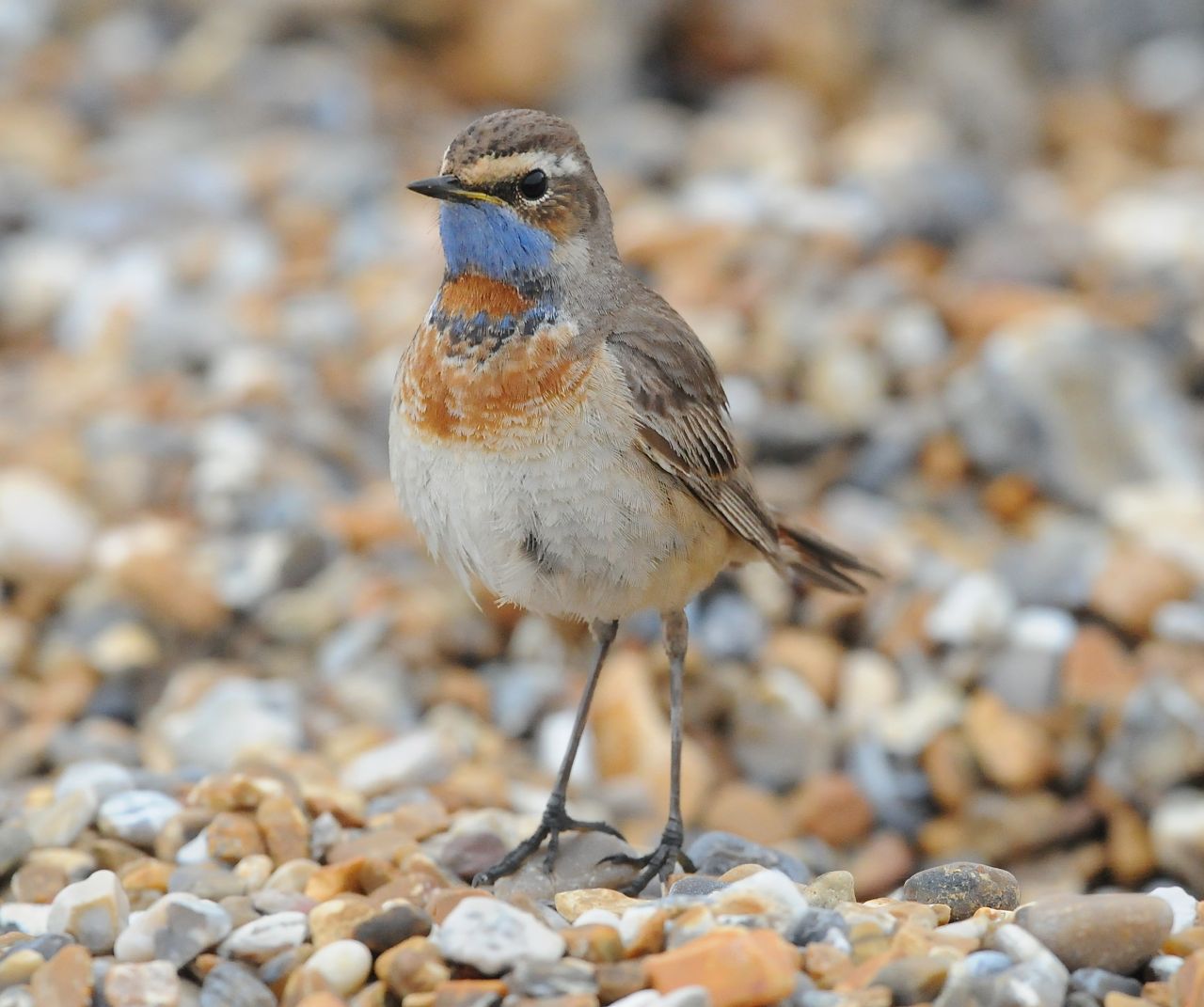
Red-spotted Bluethroat, Blakeney Point, Norfolk (Photo: Roger Ridley)

Long-tailed Duck, Norway (Photo: Garth Peacock)

Cuckoo, Scarborough, North Yorkshire (Photo: Steve Race)

Black-winged Stilt, Greece (Photo: John Starkey)

Pied Flycatcher, Gilfach Farm NR, Powys (Photo: Mike McKenzie)

Tree Pipit, Dartmoor, Devon (Photo: Steve Hatch)


